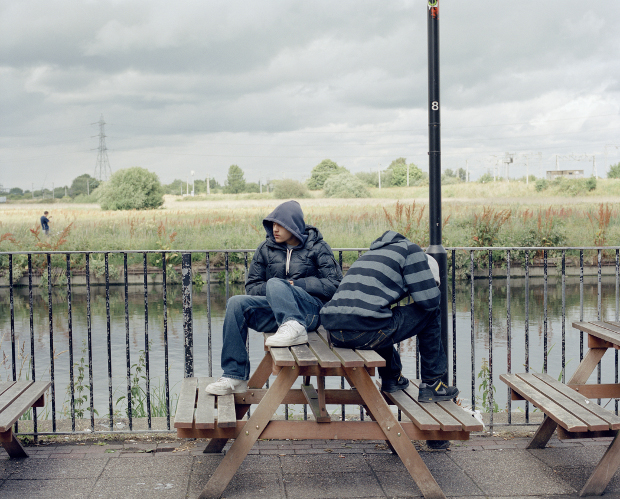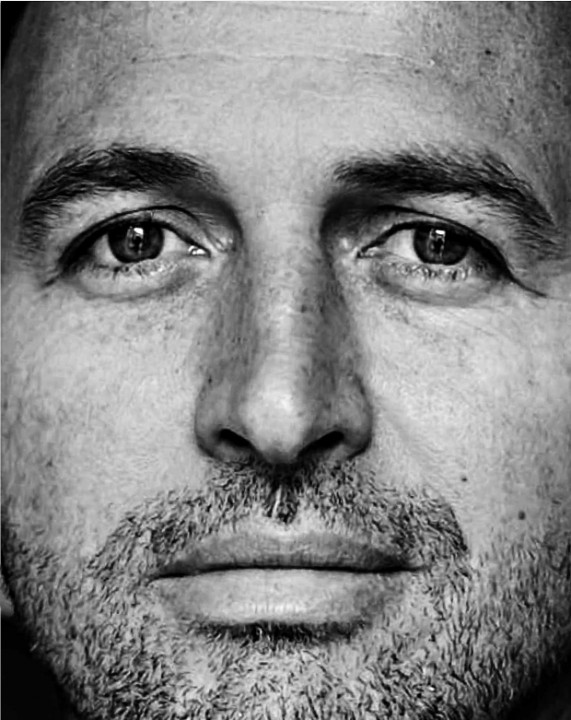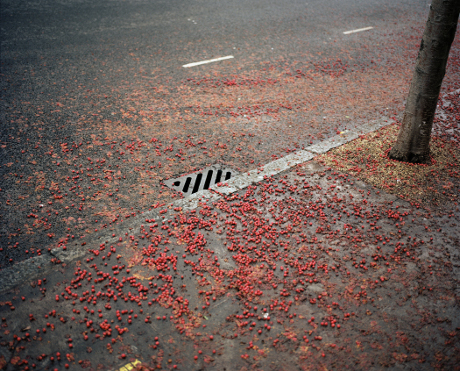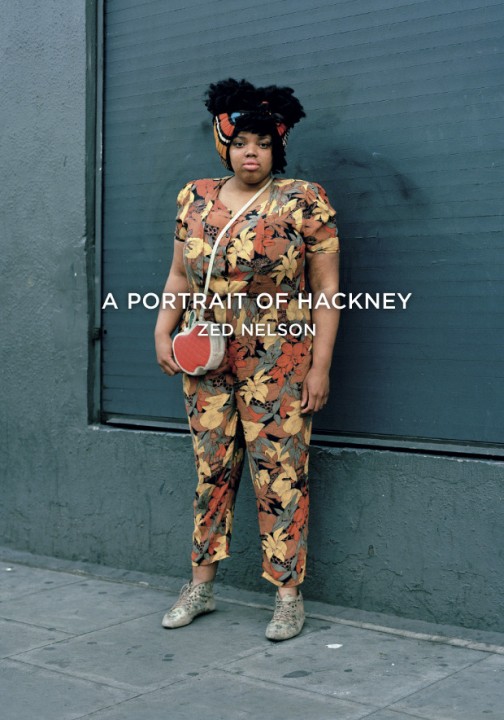
Born in Kampala, Uganda in 1965, photographer Zed Nelson moved with his family to East London at the age of four after dictator Idi Amin came to power and the situation became increasingly untenable for his parents, both journalists. Nelson’s career as an award-winning photojournalist took a different turn when the car he was travelling in was ambushed while on assignment in Kabul, Afghanistan. Turning his lens to what he describes as the “fault-lines in Western society”, he’s produced critically-acclaimed projects covering issues such as gun culture in America and cosmetic surgery. This month sees the release of A Portrait of Hackney, Nelson’s latest photobook documenting the ever-changing face of area.
When did you move to London and what was it like for you moving from an entirely different continent and culture?
I was only four years old when my family moved back to London from Uganda. Idi Amin had come to power and my father was arrested and dragged out of bed in the middle of the night and taken away. He was editor of a newspaper in the capital, Kampala. He was released unharmed, but it was time to leave. I don’t remember the transition to be honest, at that age things just happen.
You have talked about the period after your car was ambushed in Kabul and coming home to news of the Dunblane massacre changing the direction of your career as a photographer. Can you explain more about the significance of that?
As a young photographer I had been driven by an idealistic notion of ‘saving the world’, of shining a light on important and ignored issues. This often led me to focus on the ‘developing world’ – on war, conflict, and human-rights issues. But, over the years, I had increasing concerns that instead of ‘saving the world’ I might actually be reinforcing racial stereotypes. It also became clear to me that the media in which my work was reproduced was unwilling to deal with the complexity of the issues. A turning point in my career came when I was involved in a car ambush in Afghanistan in which a friend and my interpreter were both shot and horribly injured.
After several years of photographing some of the most troubled and conflict-torn areas in the developing world, I was already getting sick of photographing young men killing each other in foreign countries with guns supplied by our own governments. I returned to the UK and turned on the TV to see the Dunblane massacre – Britain’s first deadly school shooting rampage in which 16 children were killed.
I decided it was time to focus closer to home, to reflect on the problems and fault-lines in Western society, and to work on a long-term project where I could work to my own rules. Gun Nation explored the paradox of why America’s most potent symbol of freedom is also one of its greatest killers – resulting in an annual death toll of over 30,000 American citizens. That project was an attempt to show the power of the commercial gun industry in the USA, and to question the realities of America’s gun culture.

In comparison to other projects such as Love Me, Gun Nation and In This Land, A Portrait of Hackney has a very different feel and scope. What interests you about this particular patch of London?
Hackney is a personal project undertaken for no reason other than to remember what it was like to just wander the streets and photograph, to explore and think. I’d been travelling for years, working on quite serious subjects, and I had largely ignored my own country and my own neighbourhood.
I have lived in Hackney all my life. It’s where I went to school, learnt to ride a bike. It was always shabby, and in many ways represented a place to get away from. But it’s changing, and by taking the time to see it I kind of fell in love with the area. The images are a kind of meditation on the confusion of cultures, clash of identities and the beauty and ugliness that co-exist in the borough today.
Can you tell me a bit about how and why you first started photographing Hackney?
Hackney suddenly seemed very alive – crazy and absurd. It was always poor – one of the poorest boroughs in London – but suddenly it became trendy. One day I laughed out loud pedalling home on my bike. Passing someone sporting a crazy ‘look’. I thought, I must document this moment.

What story does A Portrait of Hackney tell?
To try and make ‘sense’ of the place seems futile. Hackney is a socially, ethnically diverse melée. It has violence, beauty, wildlife, concrete wastelands, poverty and affluence jumbled together, vying for space. It is tattered and fractured, but very alive. But I am watching with fascination as the area goes through a metamorphosis – and witnessing an extraordinary contemporary social situation develop in the borough, where fashionable young hipsters, yuppie developments and organic cafés co-exist awkwardly with Hackney’s most under-privileged.
The social landscape for an under-privileged teenager growing up in Hackney is a million light-years away from the new urban hipsters who frequent the cool bars and expensive cappuccino cafés springing up in the same streets. These worlds co-exist side-by-side but entirely separate, creating bizarre juxtapositions of wealth and poverty, aspiration and hopelessness. There is a story of gentrification going on here. And it raises difficult questions that are hard to answer – is it good, or bad? I think people have a way of ‘unseeing’ things – which allows us to ignore that which does not directly affect our own lives.
How do you feel about how Hackney is changing – the rampant pace of gentrification, for example?
I enjoy Hackney today more than I ever have. But I also watch with a growing concern for its identity. As the property developers move in and gated luxury apartments spring up on every street corner you have to wonder how will it end? There’s a reoccurring motif in my images of Hackney, of cracked pavements and walls, melting tarmac and weeds and roots bursting through concrete. It’s as if nature is trying to reclaim the land, and Hackney – under-funded, neglected and poorly maintained – is constantly being sucked back into the earth. It amuses me to see this, as I find other, wealthier areas where nature has been conquered depressing and disconcerting – covered over in tarmac, cemented and de-weeded. I hope the property developers don’t win.
A Portrait of Hackney by Zed Nelson, published by Hoxton Mini Press, is out now. RRP: 12.95. ISBN: 9780957699830

